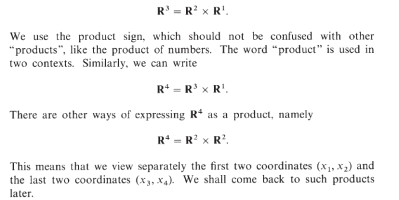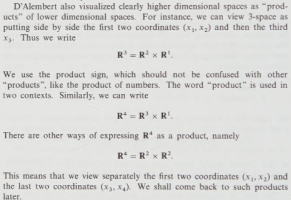I'm going through Serge Lang's Intro to Linear Algebra. In one section he describes the Cartesian Products of higher dimensions than just R x R (see image below). I can't find anything that shows what this looks like geometrically, at least for R^3. The last sentence in the image says "This means that we view separately the first two coordinates (x1, x2) and the last two coordinates (x3, x4)." This seems to me that (x1, x2) and (x3, x4) are just two points in R2 rather than a single point in R4. I'm having trouble visualizing this geometrically. Also having trouble understanding how something like R2 x R = R3 ==> (a, b) x c would result in a single point in R3 instead of something distributive like (ac, bc). Any help or pointing to resources online would be appreciated.



